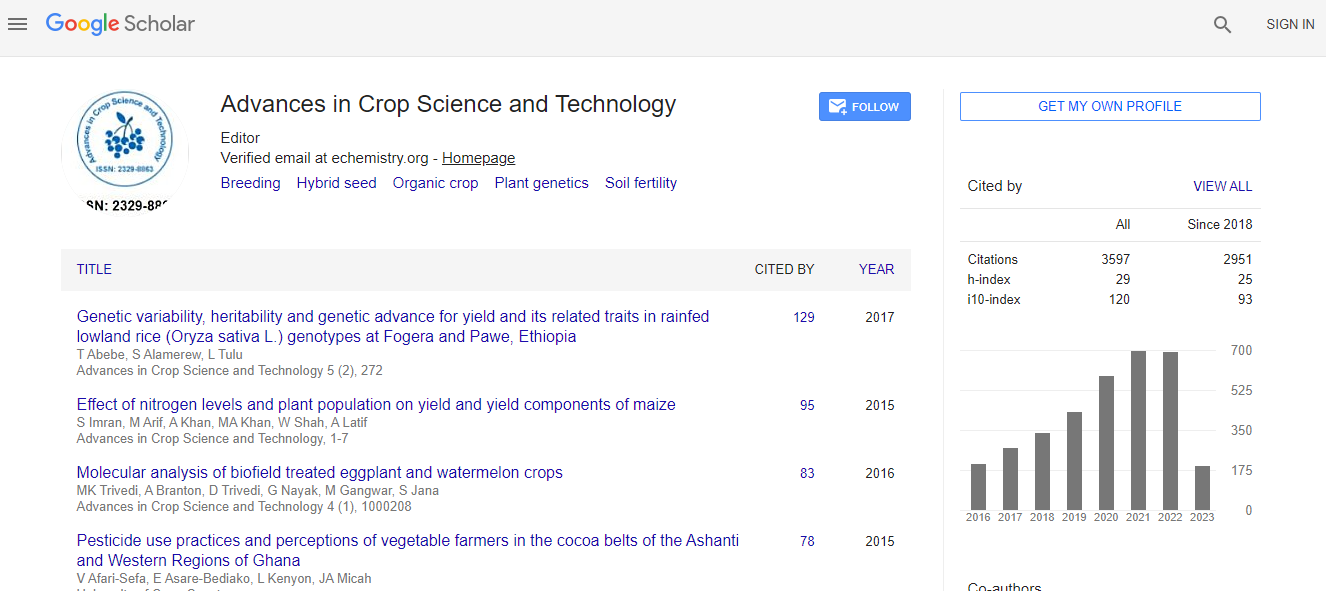Sustainable Alternatives: The Potential of Crop-Derived Bioplastics in Reducing Agricultural Waste and Plastic Pollution
*Corresponding Author:Received Date: Nov 04, 2024 / Published Date: Nov 29, 2024
Citation: hinaza SO (2024) Sustainable Alternatives: The Potential of CropDerived Bioplastics in Reducing Agricultural Waste and Plastic Pollution. Adv Crop Sci Tech 12: 756.
Copyright: Copyright: © 2024 Chinaza SO. This is an open-access article distributed under the terms of the Creative Commons Attribution License, which permits unrestricted use, distribution, and reproduction in any medium, provided the original author and source are credited.
Abstract
The growing concerns over agricultural waste management and plastic pollution have driven the exploration of sustainable alternatives. Crop-derived bioplastics represent a promising solution by offering an eco-friendly substitute to conventional petroleum-based plastics. These bioplastics are produced from renewable agricultural resources such as corn, wheat, and sugarcane, and their production can help reduce agricultural waste while minimizing environmental impacts. This paper examines the potential of crop-based bioplastics in addressing two critical global challenges: the excessive accumulation of agricultural byproducts and the ever-increasing burden of plastic pollution. It discusses the current state of bioplastics technology, the advantages and limitations of various crop feedstocks, and the potential environmental benefits. Additionally, the paper explores the scalability and economic feasibility of crop-derived bioplastics, highlighting the need for integrated policies and innovations in both agriculture and materials science to fully realize their potential

 Spanish
Spanish  Chinese
Chinese  Russian
Russian  German
German  French
French  Japanese
Japanese  Portuguese
Portuguese  Hindi
Hindi 
